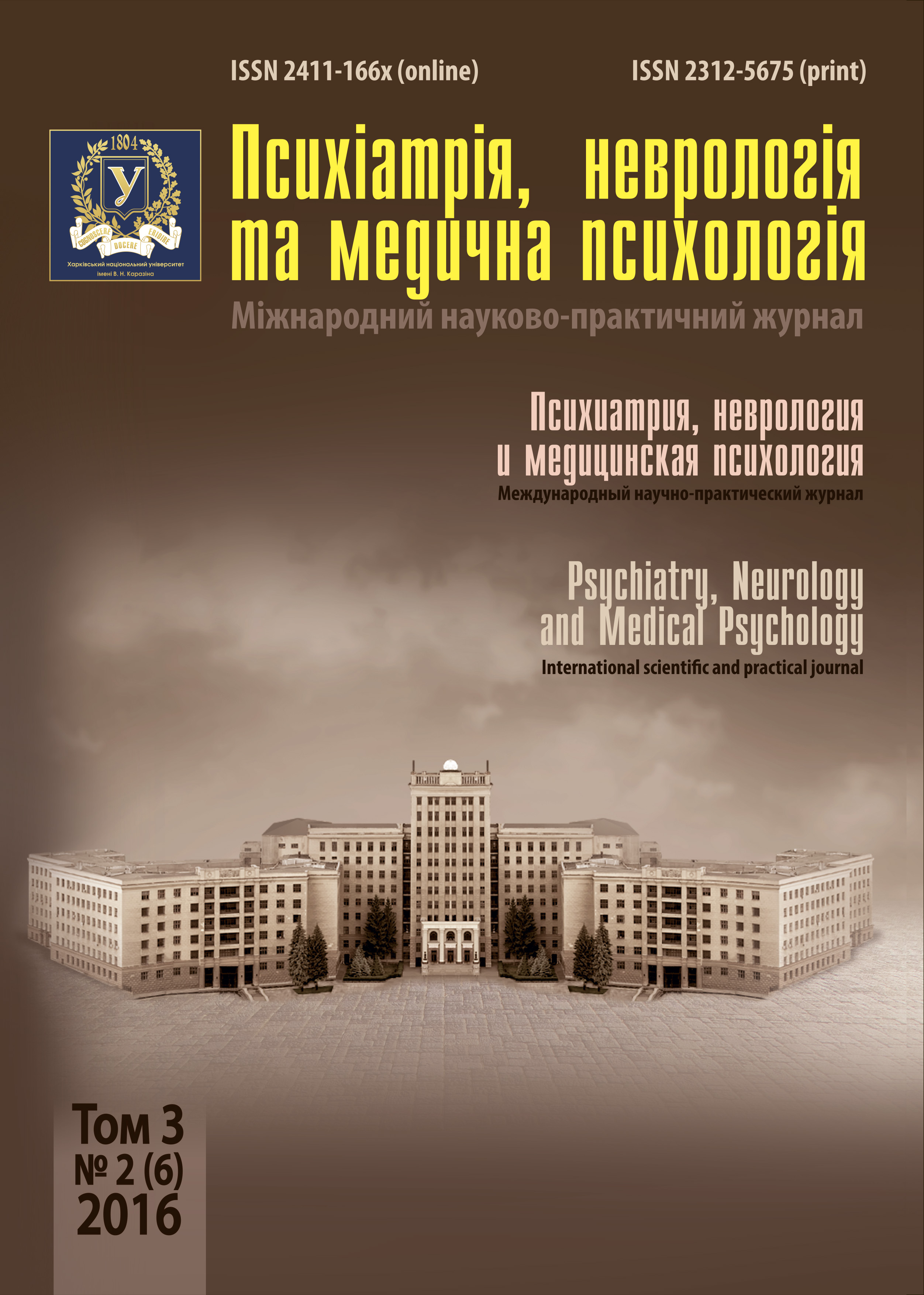Pathology Tanning
Abstract
The present paper views pathology tanning (deliberate exposure of skin to ultraviolet rays with the aim of changing its color, attaining "suntan") as a disorder from the group of habit and inclination disorders (F63 in ICD-10). There is provided the definition of pathology tanning, diagnostics criteria and exclusion criteria. The result of implementing the AUDIT-similar screening test worked out by the author is given (so called AUDIT-similar tanning test) for differing pathology and non-pathology (ordinary) tanning in the framework of the method of complex estimation of an addictive status of an individual and population through the system of AUDIT-similar tests (I. V. Lynsky, A. I. Minko, A. F. Artemchuk, et al, 2009). The amount of people with pathology tanning in the regional sample of young people is established. The gender proportion of people with pathology tanning and without it is provided. The necessity of further research of tanning as a social phenomenon with high abuse liability is outlined.Downloads
References
Grant J. E. Disorders habits and instincts and "behavioral addiction" in ICD-11 / J. E. Grant, M. Atmaca, N. A. Fineberg // Word Psychiatry. – 2014. – No 13(2). – Р. 125–127.
World Health Organization. The ICD-10 classification of mental and behavioural disorders: clinical descriptions and diagnostic guidelines. – Geneva : World Health Organization, 1992.
American Psychiatric Association. Diagnostic and statistical manual of mental disorders. – 4th ed, text revision. – Washington : American Psychiatric As-sociation, 2000.
Карманное руководство к МКБ-10: Классификация психических и поведенческих расстройств (с глоссарием и исследовательскими диагностическими критериями) / под ред. Дж. Э. Купера: пер. с англ. Д. Полтавца. – К. : Сфера, 2000. – 416с.
Kourosh A. S. Tanning as a behavioral addiction / A. S. Kourosh, C. R. Harrington, B. Adinoff // American Journal of Drug and Alcohol Abuse. – 2010. – No 36(5). – Р. 284–290.
Руженков В. А. Аддиктивное поведение студенческой молодежи: систематика, распространенность, клиника и профилактика / В. А. Руженков, И. С. Лукьянцева, В. В. Руженкова // Научные ведомости БелГУ. Серия: Медицина. Фармация. – 2015. – No 10(207). – С. 13–25.
Танорексия [Электронный ресур]. – Режим доступа : https://ru.wikipedia.org/wiki/%D0%A2%-D0% B0%D0% BD%D0%BE%D1%80%D0%B5%D0%BA%D1%81%D0%B8%D1%8F. 8. Stapleton J. L. The Behavioral Addiction Indoor Tanning Screener (BAITS): An Evaluation of a Brief Measure of Behavioral Addictive Symptoms / J. L. Stapleton, J. J. Hillhouse, R.Turrisi [et al.] // Acta Derm. Venereol. – 2016. – No 96. – Р. 552–553.
Fell G. L. Skin beta-endorphin mediates addiction to UV light / G. L. Fell, K. C. Robinson, J. Mao, C. J. Woolf, D. E. Fisher. – 2014. – No 157. – Р. 1527–1534.
Метод комплексной оценки аддиктивного статуса индивида и популяции с помощью системы AUDIT–подобных тестов / И. В. Линский, А. И. Минко, А. Ф. Артемчук [и др.] // Вісник психіатрії та психофармакотерапії. – 2009. – No 2(16). – С. 56–70.
Copyright (c) 2017 Валерия Валерьевна Пономарёва

This work is licensed under a Creative Commons Attribution 4.0 International License.

